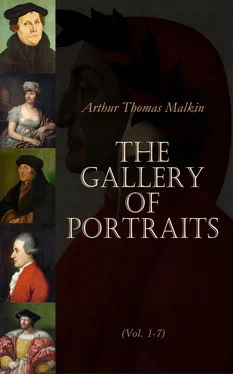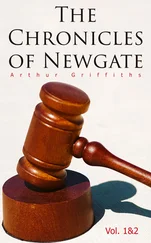Early in 1649 the king was put to death. For a full view of the state of parties which led to this memorable event, we must refer the reader to the history of the times. That act was done by the Independent party, to which Milton belonged, and was precipitated by the intrigues of the Presbyterians, who were making common cause with the king, to ensure the overthrow of the Independents. The lamentations and outcries of the Presbyterians were long and loud. Under colour of a generous sympathy with the unhappy prince, they mourned for their own political extinction, and the triumph of their enemies. This Milton well knew, and to expose the selfishness of their clamours, as well as to disarm their appeals to the popular feeling, he now published his ‘Tenure of Kings and Magistrates.’ In the first part of this, he addresses himself to the general question of tyrannicide, justifying it, first, by arguments of general reason, and secondly, by the authority of the reformers. But in the latter part he argues the case personally, contending that the Presbyterians at least were not entitled to condemn the king’s death, who, in levying war, and doing battle against the king’s person, had done so much that tended to no other result. “If then,” is his argument, “in these proceedings against their king, they may not finish, by the usual course of justice, what they have begun, they could not lawfully begin at all.” The argument seems inconclusive, even as addressed ad hominem : the struggle bore the character of a war between independent parties, rather than a judicial inquiry, and in war the life of a prisoner becomes sacred.
At this time the Council of State had resolved no longer to employ the language of a rival people in their international concerns, but to use the Latin tongue as a neutral and indifferent instrument. The office of Latin Secretary, therefore, was created, and bestowed upon Milton. His hours from henceforth must have been pretty well occupied by official labours. Yet at this time he undertook a service to the state, more invidious, and perhaps more perilous, than any in which his politics ever involved him. On the very day of the king’s execution, and even below the scaffold, had been sold the earliest copies of a work, admirably fitted to shake the new government, and for the sensation which it produced at the time, and the lasting controversy which it has engendered, one of the most remarkable known in literary history. This was the ‘Eikon Basilike, or Royal Image,’ professing to be a series of meditations drawn up by the late king, on the leading events from the very beginning of the national troubles. Appearing at this critical moment, and co-operating with the strong reaction of the public mind, already effected in the king’s favour by his violent death, this book produced an impression absolutely unparalleled in any age. Fifty thousand copies, it is asserted, were sold within one year; and a posthumous power was thus given to the king’s name by one little book, which exceeded, in alarm to his enemies, all that his armies could accomplish in his lifetime. No remedy could meet the evil in degree. As the only one that seemed fitted to it in kind, Milton drew up a running commentary upon each separate head of the original: and as that had been entitled the king’s image, he gave to his own the title of ‘Eikonoclastes, or Image-breaker,’ “the famous surname of many Greek emperors, who broke all superstitious images in pieces.”
This work was drawn up with the usual polemic ability of Milton; but by its very plan and purpose, it threw him upon difficulties which no ability could meet. It had that inevitable disadvantage which belongs to all ministerial and secondary works: the order and choice of topics being all determined by the Eikon, Milton, for the first time, wore an air of constraint and servility, following a leader and obeying his motions, as an engraver is controlled by the designer, or a translator by his original. It is plain, from the pains he took to exonerate himself from such a reproach, that he felt his task to be an invidious one. The majesty of grief, expressing itself with Christian meekness, and appealing, as it were from the grave, to the consciences of men, could not be violated without a recoil of angry feeling, ruinous to the effect of any logic, or rhetoric the most persuasive. The affliction of a great prince, his solitude, his rigorous imprisonment, his constancy to some purposes which were not selfish, his dignity of demeanour in the midst of his heavy trials, and his truly Christian fortitude in his final sufferings—these formed a rhetoric which made its way to all hearts. Against such influences the eloquence of Greece would have been vain. The nation was spell-bound; and a majority of its population neither could or would be disenchanted.
Milton was ere long called to plead the same great cause of liberty upon an ampler stage, and before a more equitable audience; to plead not on behalf of his party against the Presbyterians and Royalists, but on behalf of his country against the insults of a hired Frenchman, and at the bar of the whole Christian world. Charles II. had resolved to state his father’s case to all Europe. This was natural, for very few people on the continent knew what cause had brought his father to the block, or why he himself was a vagrant exile from his throne. For his advocate he selected Claudius Salmasius, and that was most injudicious. This man, eminent among the scholars of the day, had some brilliant accomplishments, which were useless in such a service, while in those which were really indispensable, he was singularly deficient. He was ignorant of the world, wanting in temper and self-command, conspicuously unfurnished with eloquence, or the accomplishments of a good writer, and not so much as master of a pure Latin style. Even as a scholar, he was very unequal; he had committed more important blunders than any man of his age, and being generally hated, had been more frequently exposed than others to the harsh chastisements of men inferior to himself in learning. Yet the most remarkable deficiency of all which Salmasius betrayed, was in his entire ignorance, whether historical or constitutional, of every thing which belonged to the case.
Having such an antagonist, inferior to him in all possible qualifications, whether of nature, of art, of situation, it may be supposed that Milton’s triumph was absolute. He was now thoroughly indemnified for the poor success of his ‘Eikonoclastes.’ In that instance he had the mortification of knowing that all England read and wept over the king’s book, whilst his own reply was scarcely heard of. But here the tables were turned: the very friends of Salmasius complained, that while his defence was rarely inquired after, the answer to it, ‘Defensio pro Populo Anglicano,’ was the subject of conversation from one end of Europe to the other. It was burnt publicly at Paris and Toulouse: and by way of special annoyance to Salmasius, who lived in Holland, was translated into Dutch.
Salmasius died in 1653, before he could accomplish an answer that satisfied himself: and the fragment which he left behind him was not published, until it was no longer safe for Milton to rejoin. Meantime others pressed forward against Milton in the same controversy, of whom some were neglected, one was resigned to the pen of his nephew, Philips, and one answered diffusely by himself. This was Du Moulin, or, as Milton persisted in believing, Morus, a reformed minister then resident in Holland, and at one time a friend of Salmasius. For two years after the publication of this man’s book (Regii Sanguinis Clamor) Milton received multiplied assurances from Holland that Morus was its true author. This was not wonderful. Morus had corrected the press, had adopted the principles and passions of the book, and perhaps at first had not been displeased to find himself reputed the author. In reply, Milton published his ‘Defensio Secunda pro Populo Anglicano,’ seasoned in every page with some stinging allusions to Morus. All the circumstances of his early life are recalled, and some were such as the grave divine would willingly have concealed from the public eye. He endeavoured to avert too late the storm of wit and satire about to burst on him, by denying the work, and even revealing the author’s real name: but Milton resolutely refused to make the slightest alteration. The true reason of this probably was that the work was written so exclusively against Morus, full of personal scandal, and puns and gibes upon his name, which in Greek signifies foolish, that it would have been useless as an answer to any other person. In Milton’s conduct on this occasion, there is a want both of charity and candour. Personally, however, Morus had little ground for complaint: he had bearded the lion by submitting to be reputed the author of a work not his own. Morus replied, and Milton closed the controversy by a defence of himself, in 1655.
Читать дальше












